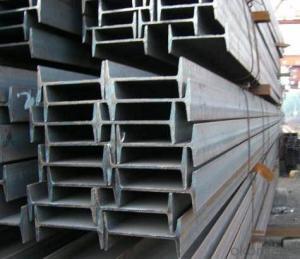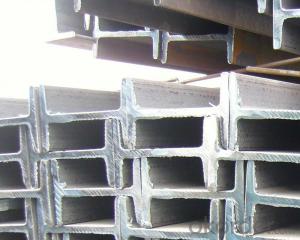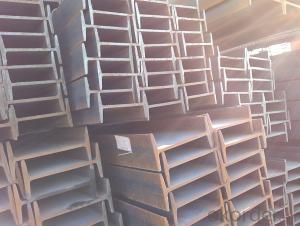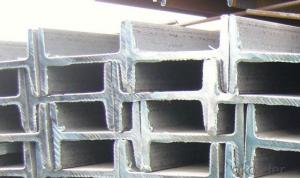European Standard IPE200 with High Quality
- Loading Port:
- Tianjin
- Payment Terms:
- TT or LC
- Min Order Qty:
- 50 m.t
- Supply Capability:
- 15000 m.t/month
OKorder Service Pledge
OKorder Financial Service
You Might Also Like
Product Description of European Standard IPE200 with High Quality:
Specifications of European Standard IPE200 with High Quality:
1.Standard: EN10025
2.Material: S235JR or Equivalent
3.Length: 6m, 12m
4.Size:
Size (mm) | Mass (kg/m) |
| 200*100*5.6 | 22.4 |
Usage & Applications of European Standard IPE200 with High Quality:
Commercial building structure;
Pre-engineered buildings;
Machinery support structures;
Prefabricated structure;
Medium scale bridges.
Packaging & Delivery of European Standard IPE200 with High Quality:
1. Transportation: the goods are delivered by truck from mill to loading port, the maximum quantity can be loaded is around 40MTs by each truck. If the order quantity cannot reach the full truck loaded, the transportation cost per ton will be little higher than full load.
2. With bundles and load in 20 feet/40 feet container, or by bulk cargo, also we could do as customer's request.
3. Marks:
Color mark: There will be color marking on both end of the bundle for the cargo delivered by bulk vessel. That makes it easily to distinguish at the destination port.
Tag mark: There will be tag mark tied up on the bundles. The information usually including supplier logo and name, product name, made in China, shipping marks and other information request by the customer.
If loading by container the marking is not needed, but we will prepare it as customer's request.
FAQ:
Q1: Why buy Materials & Equipment from OKorder.com?
A1: All products offered byOKorder.com are carefully selected from China's most reliable manufacturing enterprises. Through its ISO certifications, OKorder.com adheres to the highest standards and a commitment to supply chain safety and customer satisfaction.
Q2: How do we guarantee the quality of our products?
A2: We have established an advanced quality management system which conducts strict quality tests at every step, from raw materials to the final product. At the same time, we provide extensive follow-up service assurances as required.
Q3: How soon can we receive the product after purchase?
A3: When we receive the advance payment or original LC, we will arrange production. The shipping date is dependent upon the quatity, how many sizes you want and the plan of production, but is typically 1 month to 2 month days from the beginning of production.
Images of European Standard IPE200 with High Quality:
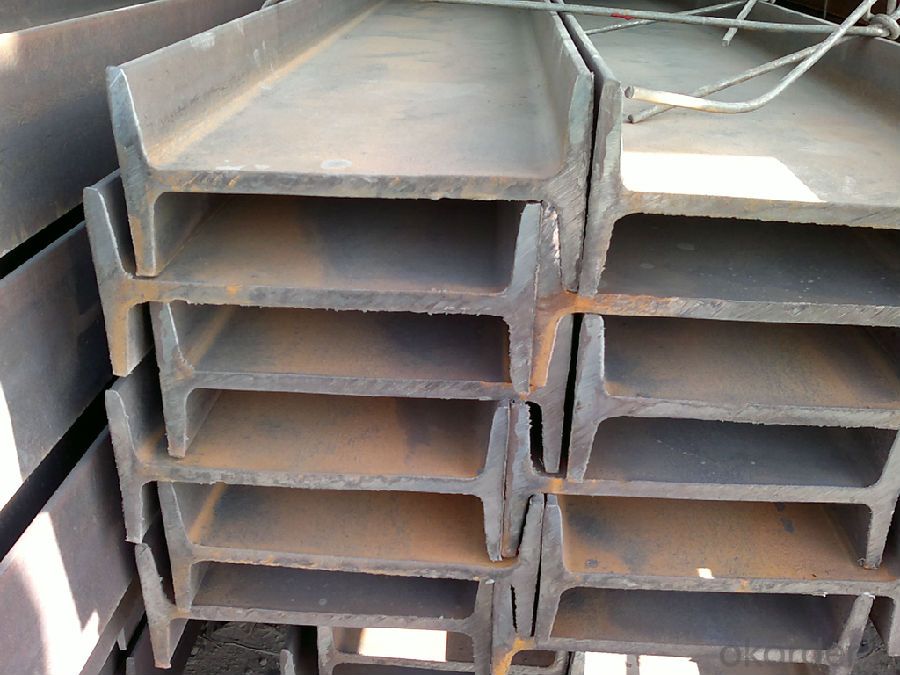
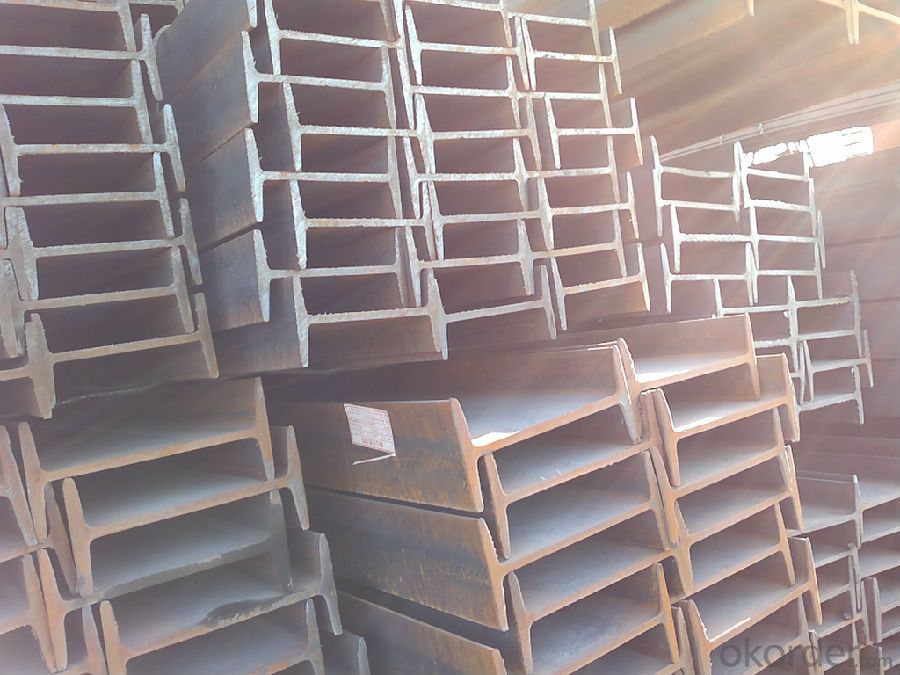
*If you would like to get our price, please inform us the size, standard/material and quantity. Thank you very much for your attention.
- Q:Can steel I-beams be used in energy-efficient building renovations?
- Yes, steel I-beams can be used in energy-efficient building renovations. Steel I-beams offer several advantages that make them suitable for energy-efficient renovations. Firstly, steel is a highly durable and strong material, allowing I-beams to provide structural support while reducing the need for excessive materials and construction. This can help minimize waste during renovation projects. Additionally, steel I-beams have a high load-bearing capacity, allowing for the creation of open floor plans and the integration of large windows, which enhances natural lighting and reduces the need for artificial lighting during the day. Furthermore, steel is a sustainable material that can be recycled, reducing the environmental impact of the renovation process. The use of steel I-beams also allows for the incorporation of insulation materials, such as spray foam or rigid foam, which can significantly improve the building's energy efficiency by reducing heat transfer. Moreover, steel I-beams can be designed to support the installation of energy-efficient systems, such as solar panels or green roofs, which contribute to the overall energy efficiency of the building. These systems can generate renewable energy and reduce the building's reliance on traditional energy sources. In conclusion, steel I-beams can be effectively used in energy-efficient building renovations. Their strength, durability, recyclability, and compatibility with energy-efficient systems make them a suitable choice for sustainable and environmentally friendly building projects.
- Q:How do steel I-beams perform in seismic zones?
- Steel I-beams are commonly used in seismic zones due to their superior performance during earthquakes. The design and construction of steel I-beams provide several advantages that make them highly resistant to seismic forces. Firstly, steel I-beams have high strength-to-weight ratio, which allows them to withstand the lateral forces generated during an earthquake. The I-shaped cross-section distributes the seismic forces more efficiently, reducing the chances of failure or collapse. Additionally, steel is a ductile material, meaning it can deform under stress without fracturing. This ductility helps absorb and dissipate the energy from seismic forces, minimizing the potential for damage. Moreover, steel I-beams can be designed with specific connections and details to enhance their seismic performance. These connections are carefully designed to provide flexibility and allow for relative movement between structural elements. This flexibility helps to distribute the seismic forces and prevent concentrated stress points that could lead to failure. The connections also ensure that the I-beams remain connected to the rest of the structure during an earthquake, providing a continuous load path for the seismic forces to be dissipated. Furthermore, steel I-beams can be reinforced and retrofitted to enhance their seismic performance in existing structures. Additional bracing, cross-ties, or shear walls can be added to improve the lateral stiffness and resistance to seismic forces. These retrofitting techniques can significantly increase the seismic resilience of steel I-beam structures. Overall, steel I-beams have proven to be highly effective in seismic zones. Their high strength, ductility, and connection detailing make them one of the preferred structural materials for earthquake-resistant construction. However, it is important to ensure that the design and construction of steel I-beam structures comply with local seismic codes and regulations to ensure optimal performance and safety.
- Q:Can steel I-beams be used in office or commercial buildings?
- Yes, steel I-beams can be used in office or commercial buildings. Steel I-beams are commonly used in the construction of commercial and office buildings due to their strength, durability, and versatility. They are designed to provide structural support and can withstand heavy loads, making them ideal for constructing large open spaces, such as offices, retail spaces, and warehouses. Additionally, steel I-beams allow for flexibility in design as they can span long distances without the need for additional support columns, providing a more open and spacious environment. Furthermore, steel is a fire-resistant material, which is crucial for ensuring the safety of occupants in commercial buildings. Overall, steel I-beams are widely used in office and commercial buildings due to their structural integrity, design capabilities, and fire-resistant properties.
- Q:How do steel I-beams perform in high-humidity environments?
- Steel I-beams perform well in high-humidity environments due to their inherent resistance to moisture. The steel used in I-beams is typically coated with protective finishes, such as galvanization or paint, which act as barriers against moisture penetration. This prevents the steel from coming into direct contact with water or humidity and helps to prevent corrosion. Additionally, steel is a non-porous material, meaning it does not absorb moisture like wood or other organic materials. This characteristic makes steel I-beams less susceptible to swelling, warping, or rotting that can occur in high-humidity conditions. However, in extremely corrosive environments, such as coastal areas with high salt content in the air, additional precautions might be necessary. In such cases, stainless steel or other corrosion-resistant alloys are commonly used to ensure the longevity and performance of the I-beams. Overall, steel I-beams are a reliable choice in high-humidity environments, offering durability, strength, and resistance to moisture-related issues.
- Q:What is the difference between I-beam and H steel?
- China's hot-rolled H steel GB (GB/T11263-1998) H steel is divided into narrow flange, wide flange and steel pile three categories, its code names are Hz, HK and hu. The narrow flange H steel is suitable for beams or columns, while wide flange H and H steel piles are suitable for axial compression members or bending members. Compared with H steel, the W, IX and iy are better than H steel under equal weight condition.The length of the I-beam is small and the height is big. It can only bear the force in one direction.H steel is deep in groove and big in thickness and can bear two directions of force.With the development of steel structure construction, only I-beam is not available, that is thickening I-beam, used for load-bearing columns, easy to instability.I-beam can only be used for cross beams, and H steel can be used for structural load-bearing columns.
- Q:What are the different types of steel surface treatments available for I-beams?
- There are several types of steel surface treatments available for I-beams, including galvanizing, painting, powder coating, and shot blasting. Each treatment offers unique advantages and can be chosen based on specific requirements such as corrosion resistance, aesthetic appeal, or durability.
- Q:What's the difference between 16# I-beam and 16A I-beam?
- No. 16, said waist high waist thickness 16cm, if have different sizes, need to add a, B, C difference, but the standard table didn't see this type of 16a, more than 20 have a, B or C type difference.
- Q:What are the different types of steel reinforcements for I-beams?
- There are several types of steel reinforcements commonly used for I-beams, including plain carbon steel, low-alloy steel, high-strength low-alloy steel, and stainless steel. Each type offers specific properties and advantages depending on the required strength, durability, and corrosion resistance for the intended application.
- Q:How does deflection affect steel I-beams?
- Deflection affects steel I-beams by causing them to bend or sag under load, which can compromise their structural integrity and potentially lead to failure. The amount of deflection depends on the beam's dimensions, material properties, and the applied load.
- Q:Can steel I-beams be used for billboard structures?
- Yes, steel I-beams can be used for billboard structures. They provide strong support and durability, making them a suitable choice for constructing billboard frames that need to withstand outdoor elements and hold a significant amount of weight.
1. Manufacturer Overview |
|
|---|---|
| Location | |
| Year Established | |
| Annual Output Value | |
| Main Markets | |
| Company Certifications | |
2. Manufacturer Certificates |
|
|---|---|
| a) Certification Name | |
| Range | |
| Reference | |
| Validity Period | |
3. Manufacturer Capability |
|
|---|---|
| a)Trade Capacity | |
| Nearest Port | |
| Export Percentage | |
| No.of Employees in Trade Department | |
| Language Spoken: | |
| b)Factory Information | |
| Factory Size: | |
| No. of Production Lines | |
| Contract Manufacturing | |
| Product Price Range | |
Send your message to us
European Standard IPE200 with High Quality
- Loading Port:
- Tianjin
- Payment Terms:
- TT or LC
- Min Order Qty:
- 50 m.t
- Supply Capability:
- 15000 m.t/month
OKorder Service Pledge
OKorder Financial Service
Similar products
New products
Hot products
Related keywords
